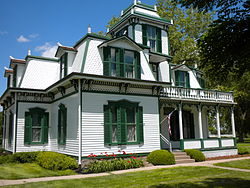| Name [3] | County | Size [2] | Image | Notes |
|---|
| acres | ha |
|---|
| Arbor Lodge State Historical Park | Otoe | 73.85 acres | 29.89 ha |  | Estate of J. Sterling Morton, founder of Arbor Day. |
| Ash Hollow State Historical Park | Garden | 1,001.03 acres | 405.10 ha |  | Major stopover on the Overland Trail |
| Ashfall Fossil Beds State Historical Park | Antelope | 360 acres | 150 ha |  | Fossil remains at a 12-million-year-old watering hole |
| Bowring Ranch State Historical Park | Cherry | 435 acres | 176 ha | | Hereford demonstration ranch donated by former U.S. Senator Eve Bowring |
| Buffalo Bill Ranch State Historical Park | Lincoln | 24.68 acres | 9.99 ha |  | Home of the famed frontier showman |
| Fort Atkinson State Historical Park | Washington | 154.36 acres | 62.47 ha |  | Reconstruction of the first U.S. military post west of the Missouri River |
| Fort Hartsuff State Historical Park | Valley | 18.4 acres | 7.4 ha |  | Typical infantry outpost of the 19th century Plains |
| Fort Kearny State Historical Park | Buffalo | 39.21 acres | 15.87 ha |  | Partial reconstruction of fort that protected travelers of the Overland Trail |
| Rock Creek Station State Historical Park | Jefferson | 353 acres | 143 ha |  | Partially reconstructed stagecoach and Pony Express station |
|















